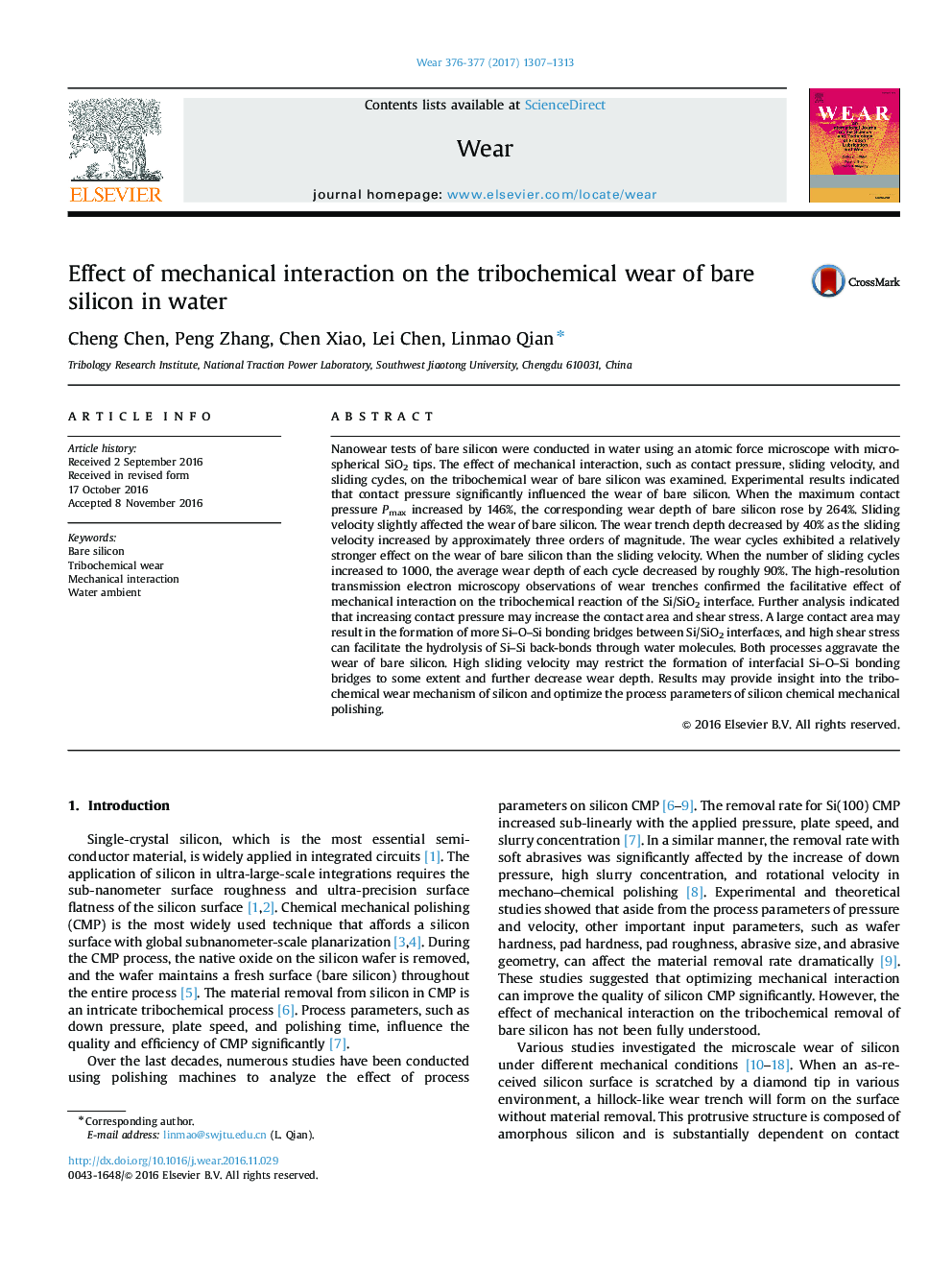| Article ID | Journal | Published Year | Pages | File Type |
|---|---|---|---|---|
| 4986575 | Wear | 2017 | 7 Pages |
Abstract
Nanowear tests of bare silicon were conducted in water using an atomic force microscope with micro-spherical SiO2 tips. The effect of mechanical interaction, such as contact pressure, sliding velocity, and sliding cycles, on the tribochemical wear of bare silicon was examined. Experimental results indicated that contact pressure significantly influenced the wear of bare silicon. When the maximum contact pressure Pmax increased by 146%, the corresponding wear depth of bare silicon rose by 264%. Sliding velocity slightly affected the wear of bare silicon. The wear trench depth decreased by 40% as the sliding velocity increased by approximately three orders of magnitude. The wear cycles exhibited a relatively stronger effect on the wear of bare silicon than the sliding velocity. When the number of sliding cycles increased to 1000, the average wear depth of each cycle decreased by roughly 90%. The high-resolution transmission electron microscopy observations of wear trenches confirmed the facilitative effect of mechanical interaction on the tribochemical reaction of the Si/SiO2 interface. Further analysis indicated that increasing contact pressure may increase the contact area and shear stress. A large contact area may result in the formation of more Si-O-Si bonding bridges between Si/SiO2 interfaces, and high shear stress can facilitate the hydrolysis of Si-Si back-bonds through water molecules. Both processes aggravate the wear of bare silicon. High sliding velocity may restrict the formation of interfacial Si-O-Si bonding bridges to some extent and further decrease wear depth. Results may provide insight into the tribochemical wear mechanism of silicon and optimize the process parameters of silicon chemical mechanical polishing.
Related Topics
Physical Sciences and Engineering
Chemical Engineering
Colloid and Surface Chemistry
Authors
Cheng Chen, Peng Zhang, Chen Xiao, Lei Chen, Linmao Qian,
